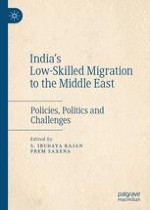2019 | OriginalPaper | Buchkapitel
5. Migration in Saudi Arabia: Present and Prospects
verfasst von : Rshood M. Khraif, Asharaf Abdul Salam, P. S. Nair, Ibrahim Elsegaey
Erschienen in: India’s Low-Skilled Migration to the Middle East
Verlag: Springer Nature Singapore
Aktivieren Sie unsere intelligente Suche, um passende Fachinhalte oder Patente zu finden.
Wählen Sie Textabschnitte aus um mit Künstlicher Intelligenz passenden Patente zu finden. powered by
Markieren Sie Textabschnitte, um KI-gestützt weitere passende Inhalte zu finden. powered by
